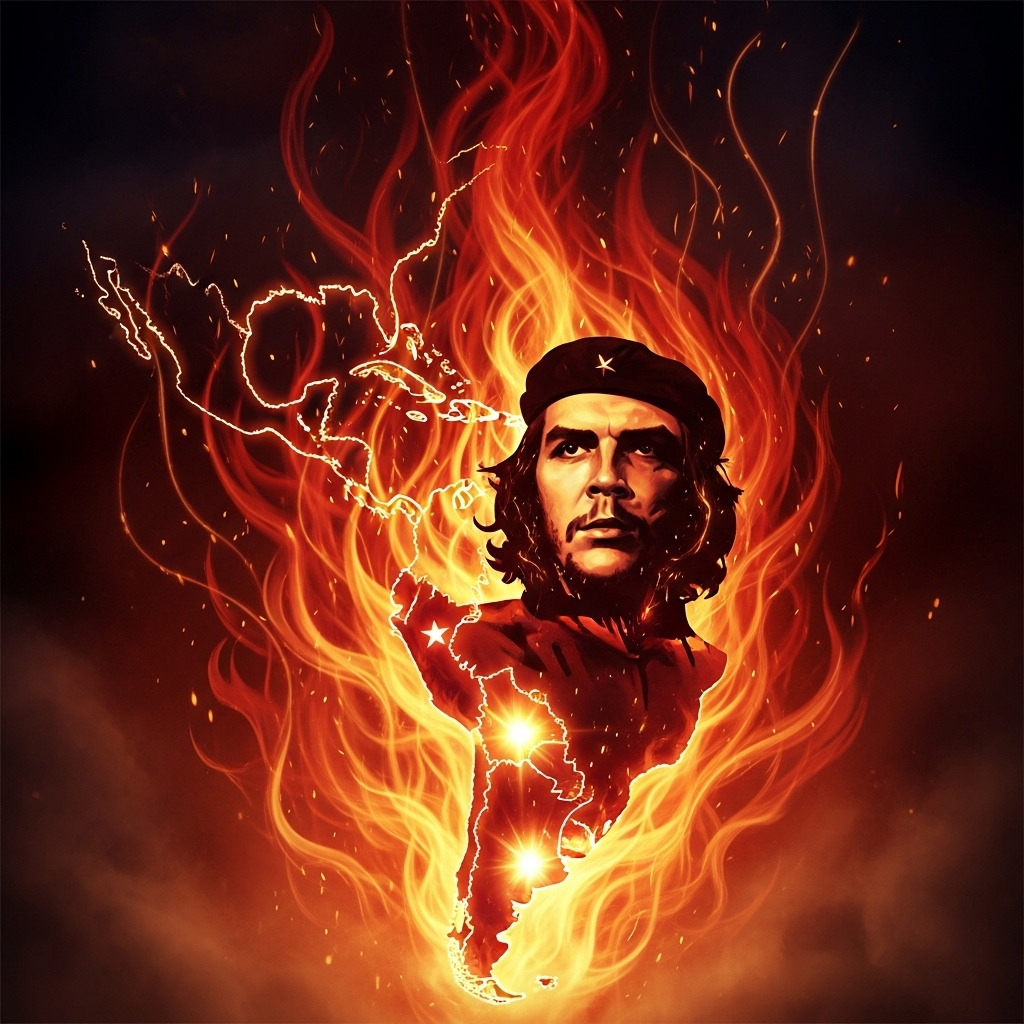
They called it “The Powerful II” the old steel horse that carried Ernesto “Che” Guevara, and his faithful squire Alberto Granados, from the Andes to the Amazon. They weren't looking for giants, but rather forgotten villages where poverty and social injustice flourished.
Amid dreams and fatigue, a revolutionary awoke; each kilometer ignited a spark in the young doctor that would cross borders. For this reason, upon graduating in 1953, he embarked on his second trip through the region.
He then visited Bolivia, Peru, Ecuador, Colombia, Panama, Costa Rica, El Salvador, and finally Guatemala. In the latter, Guevara attempted to join the militia to defend the progressive government of Jacobo Árbez, but he must flee the country and go into exile in Mexico.
A modest house in Mexico City witnessed the echo of his ideals in the voice of a young Cuban lawyer, Fidel Castro. Their conversations extended over coffee smoke and plans for an oppressed island demanding freedom.
A year later, in November 1956, they set sail from Tuxpan with eighty other men. The journey, more than a trip, marked the beginning of a paradigm: the Argentine doctor who left for Cuba and traded his gown for an olive-green uniform.
Che Guevara earned the respect and affection of the people for his courage, discipline, and sense of justice during the armed struggle in Cuba. From the Sierra Maestra Mountains, he shared hunger, fatigue, and danger with his comrades, without asking for privileges. He led decisive battles and treated the wounded with the same dedication with which he wielded the rifle.
After the triumph of the Revolution, Ernesto Che Guevara settled on the island, where he raised a family and became one of the pillars of the new government. He held positions of great responsibility, but never departed from the simple life or work with the people.
However, his internationalist spirit knew no boundaries. He resigned his positions, his comforts, and even his Cuban citizenship to return to the paths of struggle. So he set off again, convinced that his duty did not end in Cuba, but in every corner of the world where there was an oppressed people.
On his last journey, he reached Bolivia, where, amid arid mountains and hostile roads, he organized a small guerrilla group that faced isolation, scarcity, and betrayal. Even so, he kept his faith in freedom and the power of the people intact.
In October 1967, he was captured and executed in La Higuera, but his death did not extinguish his legacy. He was no longer the mad protagonist of a Cervantes novel, a prophet of better times, a spokesperson for the cry of hope that many needed, but rather the one of the eternal fire of Latin America. (Text and photo: Lenisbel Iracena Espinosa Pacheco/Journalism Student/Radio Cadena Agramonte)